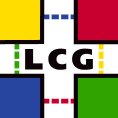LCG: Large Hadron Collider Computing Grid

Websites
http://www.cern.ch/lcg/http://www.eu-egee.org/
http://www.opensciencegrid.org/
http://www.gridtoday.com/grid/1181211.html/
Collaborators
Multinational: CERN; Enabling Grids for E-SciencE (EGEE)United States: Open Science Grid (OSG)
Description
In February 2006, a global collaboration of physicists and computer scientists developing the first truly worldwide grid computing infrastructure participated in a test, which saw data transferred around the world at a rate of up to one gigabyte per second. This test was a crucial step on the way to making LHC data available to scientists worldwide when it begins operating in 2008 at CERN. Data was transferred from CERN to 12 major computing centers around the globe, including Brookhaven National Laboratory and Fermi National Accelerator Laboratory (Fermilab), and to more than 20 other computing facilities, ten of which are located at US universities.
The global grid infrastructure, organized by the Worldwide LHC Computing Grid collaboration (WLCG), is built from international, regional and national grids such as OSG in the United States and EGEE in Europe. In the US, the OSG, together with Brookhaven, Fermilab and other collaborating institutions, provides computational, storage and network resources to fully exploit the scientific potential of two of the major LHC experiments: ATLAS (A Toroidal Large Hadron Collider Apparatus) and CMS (Compact Muon Solenoid).
Brookhaven serves as the Tier-1 center for the US ATLAS collaboration. For this experiment, Brookhaven received data at a rate higher than 150 megabytes per second from CERN. The data was then distributed to Tier-2 computing centers at Boston University, Indiana University, the University of Chicago and the University of Texas at Arlington at an aggregate rate of 20 megabytes per second.
Fermilab, the Tier-1 center for the US CMS collaboration, has already set records in data transfer from its computing center to CERN. In this challenge, Fermilab tested its brand new connections to six Tier-2 centers: Caltech; Purdue University; UCSD; the University of Florida; the University of Nebraska-Lincoln and the University of Wisconsin-Madison. Fermilab received data from CERN, archived it and replicated 50 terabytes to the Tier-2 centers where it was stored and retrieved for analysis – all using grid tools and infrastructure.
Note: January 2007, University of Chicago and Indiana University announced the MidWest Tier 2 Center, one of five Tier-2 (regional) centers in the US that will receive data from one of four massive LHC detectors. Physicists at Chicago and Indiana built components for the ATLAS particle detector, and also collaborate on scientific grid computing projects. Data from the ATLAS experiment will first flow to Tier-0, the main computational center at CERN. Tier-0 will then transmit the data to 11 Tier-1 centers worldwide, including Brookhaven. Brookhaven will, in turn, distribute portions of the CERN data to the various Tier-2 centers. The initial set of computer servers, data storage and networking equipment has been deployed at University of Chicago and at the Indianapolis campus of Indiana University, both of which will serve ATLAS data over the Open Science Grid. The sites are connected to the national infrastructure via 10Gbps wide-area connections. The Chicago-Indiana Tier-2 center is funded by grants from NSF. The project also was made possible by investments from the states of Illinois and Indiana in I-WIRE (Illinois Wired/Wireless Infrastructure for Research and Education), and I-Light (Indiana's high-speed fiber optic network for higher education and research).

